What Is SQL Server Full Backup
SQL Server full backup is a complete backup of all data in SQL Server and the basis for all other SQL Server backup operations. A full SQL backup captures all data in SQL Server when the backup operation starts, including the transaction log and creating a new log file. Backing up the transaction log is required for a full recovery from any failure.
Depending on your recovery model, you might need to perform full backups more often. For example, suppose you are using the FULL recovery model or changing from the SIMPLE recovery model to the FULL recovery model. In that case, we recommend that you perform a full backup as soon as possible after changing the recovery models. This will minimize data loss in case of an unexpected failure.
You can perform a full SQL Server backup using professional database backup software, SQL Server Management Studio, Transact-SQL, or PowerShell. For most scenarios, we recommend using Server backup software to back up SQL databases because it provides a GUI that simplifies everyday tasks and allows you to schedule an automatic full backup.
In the following content, we will explain how to create SQL Server full backup automatically or manually in detail. We hope you found this information helpful!
How to Schedule SQL Server Full Backup Automatically
EaseUS Todo Backup Enterprise provides powerful and efficient backup solutions for businesses and servers, supporting Windows Server 2022, 2019, SBS 2008, Microsoft Exchange email, and SQL databases.
With this tool, you can ensure that your SQL Server is well protected from unexpected disasters effectively. In addition, EaseUS Server backup program offers an all-in-one backup solution for SQL Server.
- Allow for different Server backup types like full, incremental, and differential backup
- Clone hard drive to serve as a backup and restore it when necessary
- Dedicated Exchange Server backup software with advanced options
To create an SQL Server full backup schedule with EaseUS Todo Backup, follow these steps:
Step 1. Open EaseUS Todo Backup Enterprise. Then click "New Task" to set a new backup.
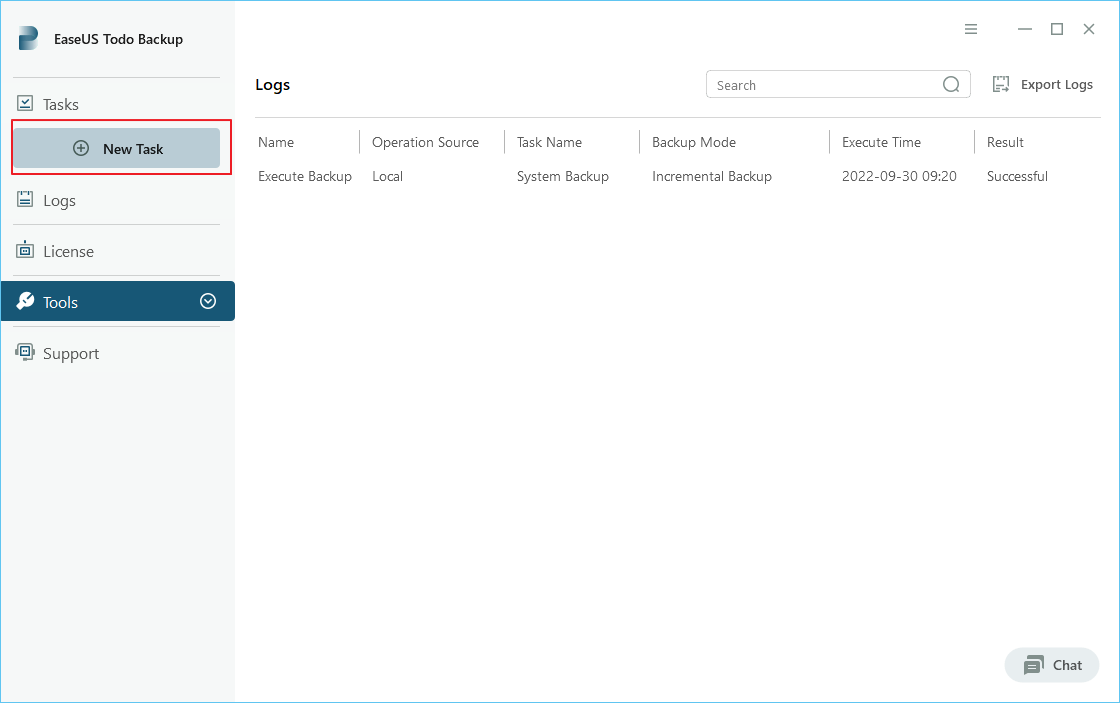
Step 2. Choose "File" as the target among the options at the top. Then select the specific files you want to back up.
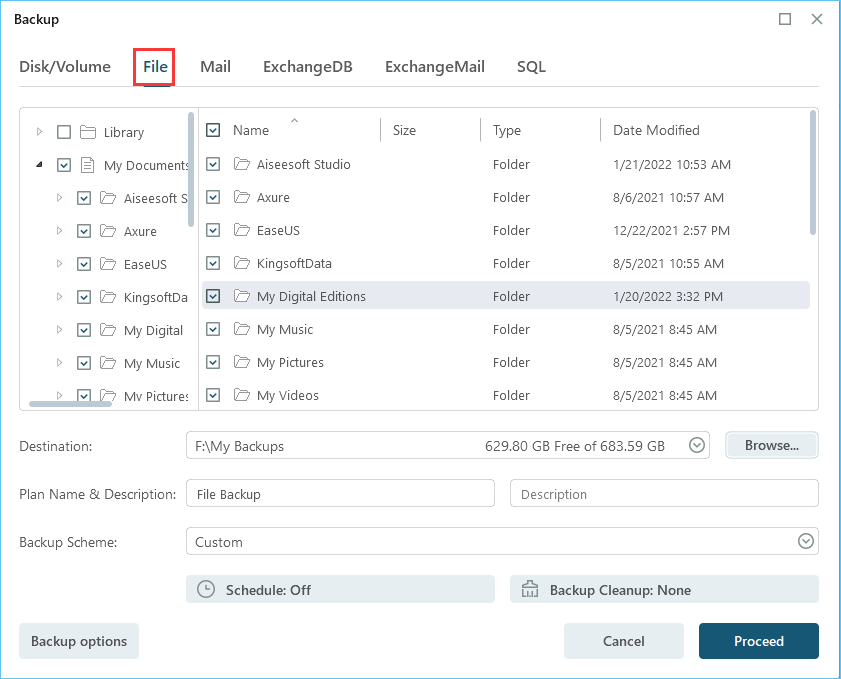
Step 3. Then click "Browser" to choose the destination where you want to put the backup.
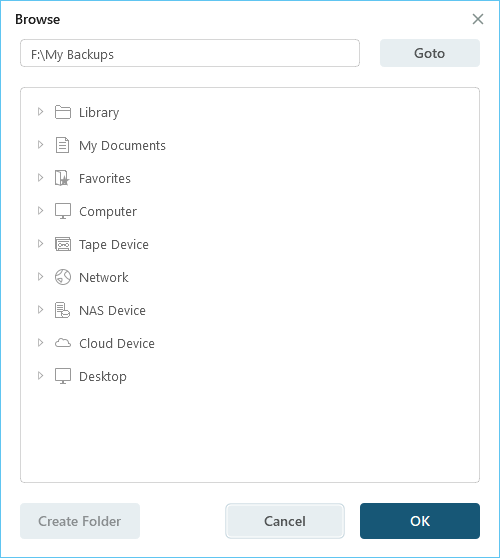
Step 4. You can customize your backup scheme by clicking "Schedule: Off". Here you can see "Schedule", "Backup cleanup" and "Adcanced Settings". Click "New" under the "Schedule" catalog.
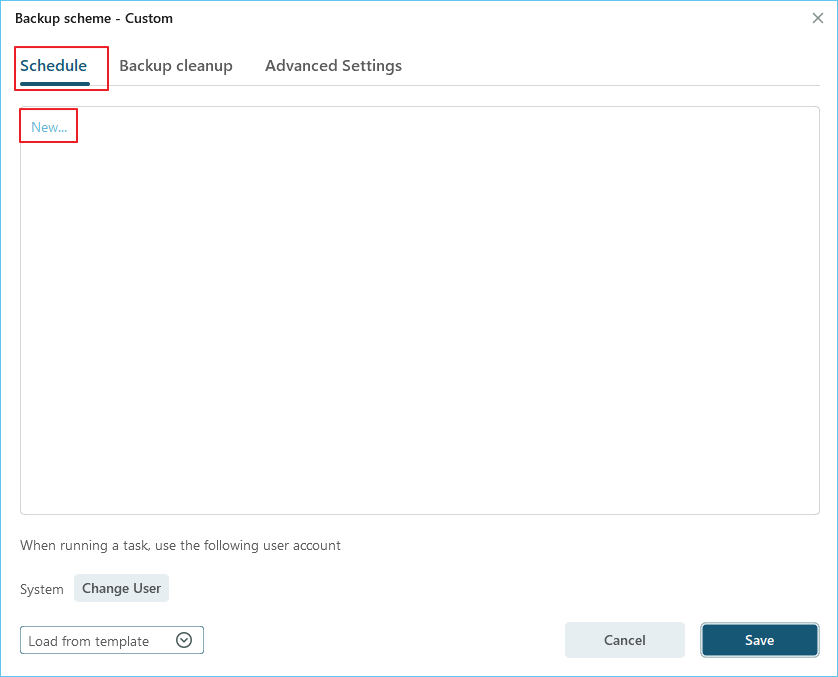
Then set the backup frequency based on your needs.
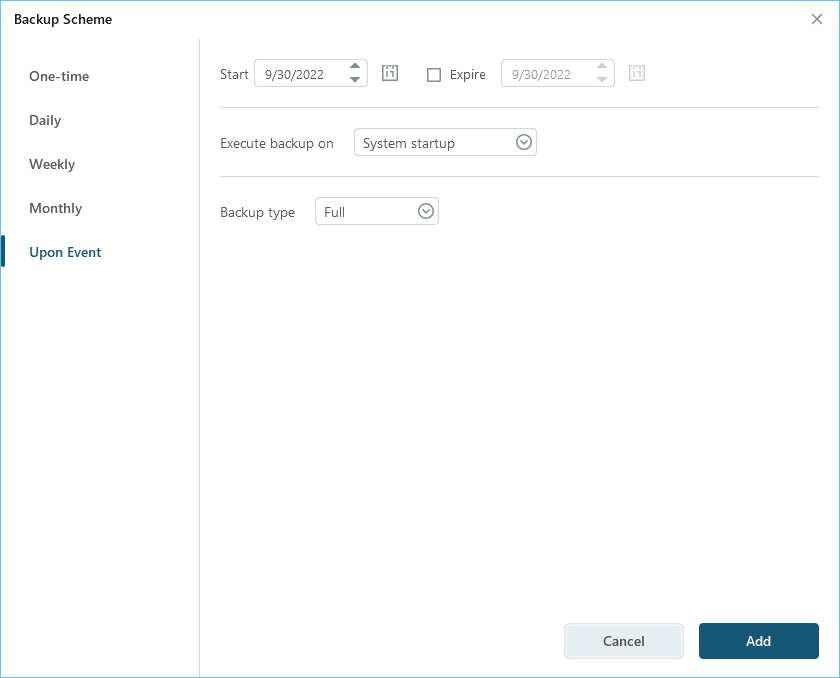
Or, you can choose the "Smart backup" under the Backup Scheme, which will monitor the selected file changes and backup sutomatically.
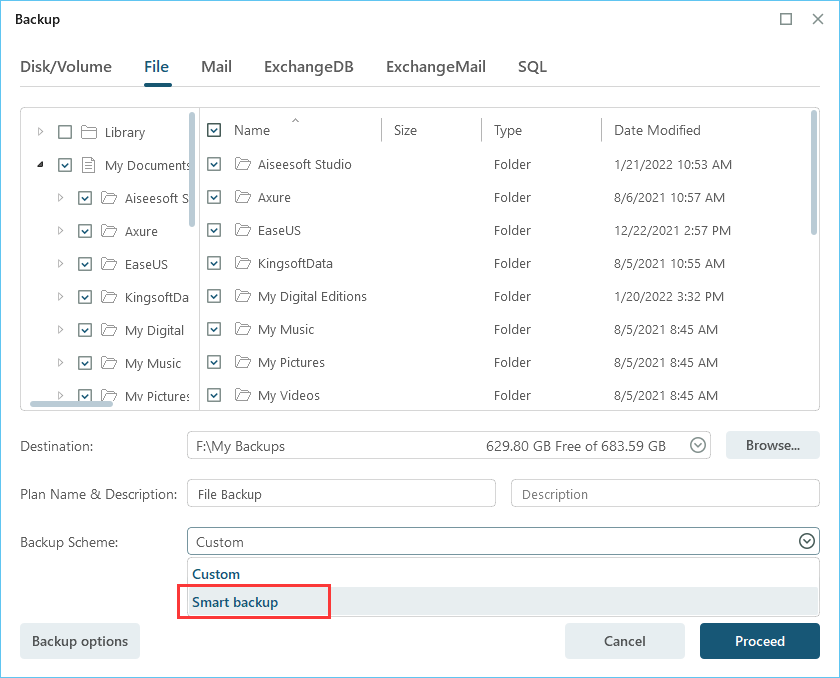
Step 5. Click "Backup options" on the bottom-left corner of the interface.
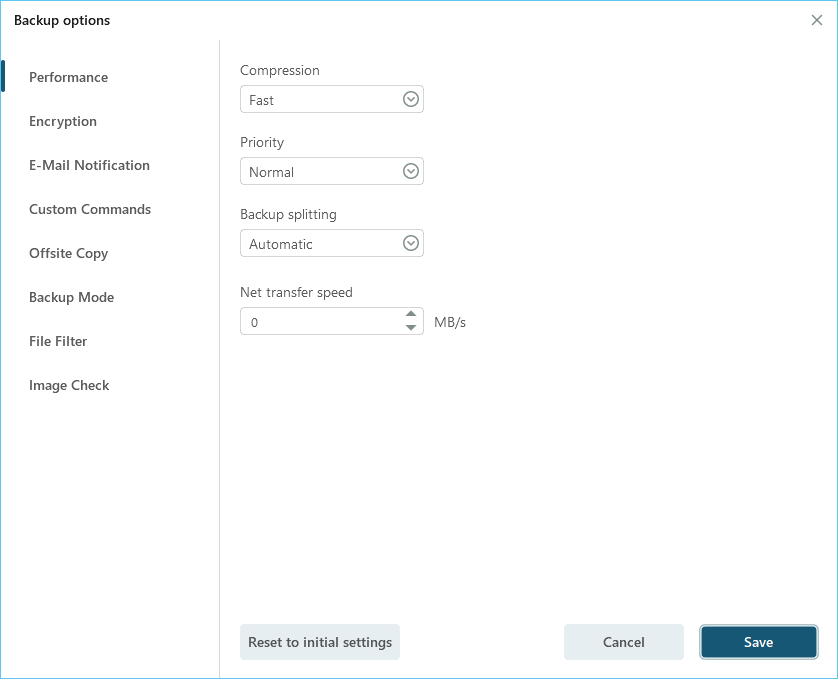
You can change the performance, encryption, e-mail notification, and other options here according to your preferences. When finish, click "Save" to return to the main interface.
Step 6. When you finish all settings, click "Proceed" to start backing up files.
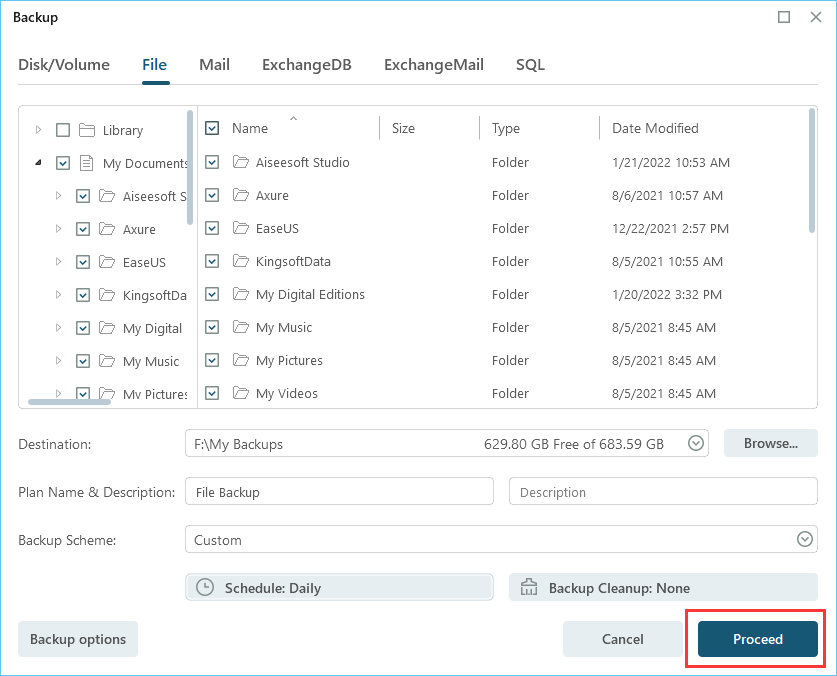
SQL Server Full Backup with SQL Server Management Studio
SQL Server Management Studio is an excellent utility for managing and backing up your SQL Server databases. Here are the how-to-steps:
Step 1. Start SQL Server Management Studio and connect to the SQL Server instance where your database is located.
Step 2. Right-click the "Backup Devices" mode in the Object Explorer to specify the backup location. Then, start the SQL Server full backup.
Step 3. Right-click the database in the Object Explorer and select "Tasks > Back Up" from the menu.
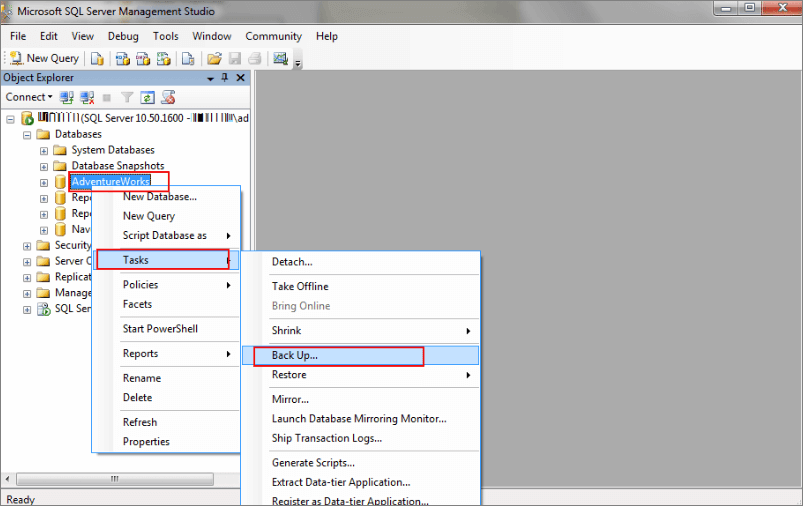
Step 4. This will open the Back Up Database dialog box. In this dialog box, you need to specify the name of the backup set, the type of backup, and the destination for your backup.
Step 5. In the Name field, enter a name for your backup set, which can identify your backup.
Step 6. Next, select "Full" from the Backup type drop-down list. This will ensure that all data in your database is backed up.
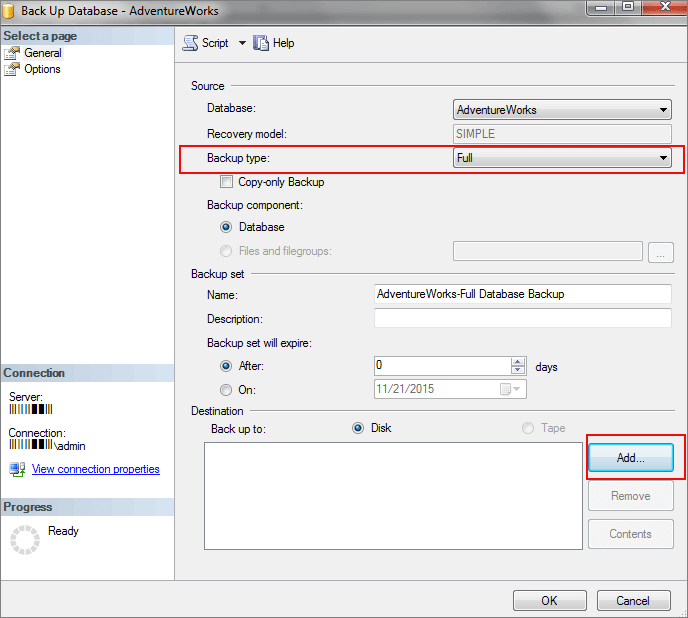
Step 7. Finally, select your backup device from the Destination drop-down list and click "OK" to start the backup process.
Step 8. SQL Server Management Studio will now begin the full backup of your SQL database. Once the backup process is complete, you will see a message indicating that the backup was successful. And you can close SQL Server Management Studio, and your SQL Server Full Backup is complete.
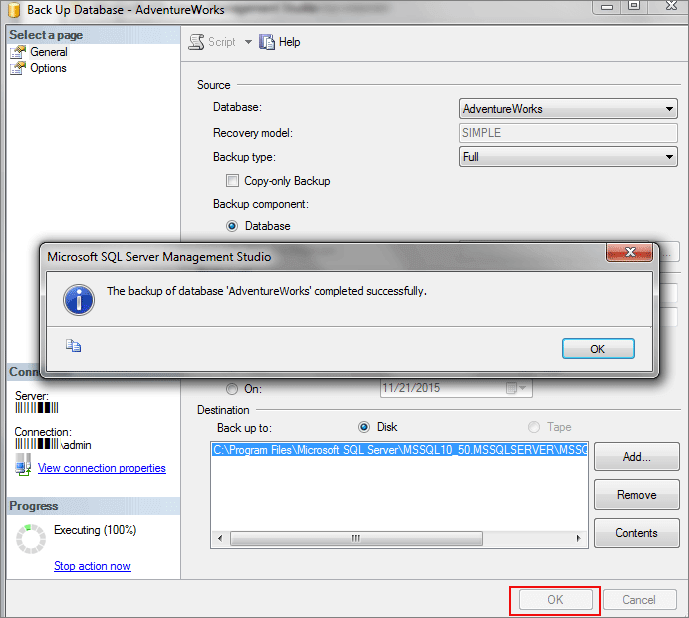
Create SQL Server Full Backup with PowerShell
Full backups are typically used to create a baseline for differential and transaction log backups. You can use PowerShell to create a SQL Server full backup by using the Backup-SqlDatabase cmdlet.
To create a SQL Server full backup by using PowerShell, follow these steps:
Step 1. Open PowerShell as an administrator. To do this, click Start, type PowerShell in the Search programs and files box, right-click Windows PowerShell in the Programs list, and then click "Run as Administrator".
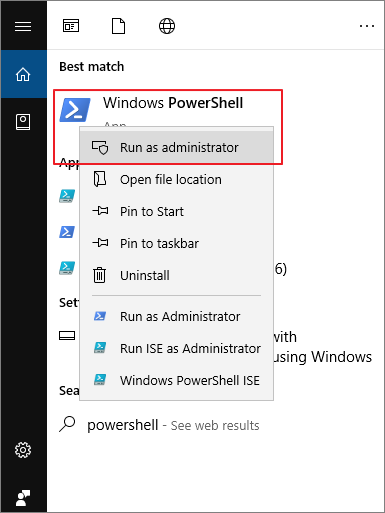
Step 2. If you are prompted for an administrator password or confirmation, type your password or click Continue.
Step 3. At the PowerShell prompt, type the following cmdlet, and then press Enter:
Backup-SqlDatabase -ComputerName "ServerName" -Database "DBName" -BackupFile "C:\SQLBackups\DBName.bak" -CompressionOption On
Replace the following placeholder values with the actual values:
- ServerName: Specifies the name of the SQL Server instance.
- DBName: Specifies the name of the database to be backed up.
- C:\SQLBackups\DBName.bak: Specifies the full path of the backup file, including the file name.
Know More: What Are Different Types of Backups in SQL Server
There are many types of data backup in SQL Server, and you can learn the basic information in the following content.
SQL Server full backup. This type of backup is helpful in backing up the entire SQL Server database and restoring a SQL Server database to a specific point in time. A SQL Server full backup can be taken with or without the transaction log.
SQL Server differential backup. This only backs up data that has changed since the last SQL Server full backup and can reduce the amount of time it takes to restore a SQL Server database from a full backup. To restore an SQL Server database from a SQL Server differential backup, you must have a copy of the SQL Server full backup and all subsequent SQL Server differential backups.
SQL Server transaction log backup. This mode backs up the transaction log and is suitable for recovering data that has been lost since the last SQL Server full or differential backup. For restoring a SQL Server transaction log backup, you need to copy of the SQL Server full backup and all subsequent SQL Server differential backups and transaction log backups.
SQL Server incremental backup. This pattern only backs up data that has changed since the last backup. However, SQL incremental backups must include the transaction log. This type of backup helps reduce the time it takes to restore a SQL Server database from a full backup.
SQL Server compressed backup. This backup method is similar to standard SQL Server backups in that they back up the entire database or individual files. However, SQL Server compressed backups can reduce the amount of disk space required to store SQL Server backups.
SQL Server encrypted backup. This SQL backup type backs up the entire database or individual file and protects sensitive data from unauthorized access. SQL Server backups are encrypted using either the AES-128 or AES-256 encryption algorithms.
SQL Server Full Backup FAQs
Read the FAQs below to get more instructions on full backup of the SQL Server database.
What are the backup types in SQL Server?
SQL Server has three main backup types: full, differential, and log. You can back up all your databases at once by doing a full database backup. This will include the data and transaction logs for all your databases. To do a full SQL backup, you must have a valid SQL Server Enterprise Edition license. Otherwise, you can only do differential or log backups.
How do I back up all my SQL Server databases?
One way to back up your SQL Server databases is to use third-party tools - EaseUS Server backup program.
Step 1. Start EaseUS Server backup tool. Choose your SQL database and backup destination.
Step 2. Configure the backup options.
Step 3. Start SQL Server database backup.
How do I make a full SQL backup?
Doing a full backup is the most comprehensive way to protect your data.
You need to use the BACKUP DATABASE command to do a full SQL backup. This command will create a copy of your database that can be used to restore your data during a disaster.
How does SQL Server backup work?
Backing up your SQL Server database is vital to keeping your data safe. When you perform a backup, you are essentially creating a copy of the entire database.
This copy can be stored on your local hard drive, remote server, or cloud. The location of the backup is not necessary; what is essential is that you have a copy of the database in case something happens to the original.
Conclusion
SQL Server full backup is a process that creates a copy of all the data in a SQL Server database. This includes the data in the tables and the indexes, and stored procedures. The SQL Server full backup also copies the SQL Server transaction log. This means that if you restore your SQL Server database from a SQL Server full backup, you will be able to roll forward to any point in time since the backup was taken.
You can make a full SQL Server backup in two solutions. One is using an automatic database backup tool - EaseUS Todo Backup, and the other is applying the three manual methods that require some technical skills.
Was This Page Helpful?
"I hope my articles can help solve your technical problems. If you are interested in other articles, you can check the articles at the bottom of this page, and you can also check my Facebook to get additional help."
Cedric Grantham is a senior editor and data recovery specialist of EaseUS. He mainly writes articles and how-to tips about data recovery on PC and Mac. He has handled 10,000+ data recovery cases and is good at data recovery of NTFS, FAT (FAT32 and ExFAT) file systems, and RAID structure reorganization.
-
Taking everything into consideration, we can say that EaseUS Todo Backup Home can offer you a little extra sense of security with a set of advanced tools. The interface provides quick adaptation, every process guiding you all the way through so you don't get stuck or further damage your system rather than keeping it safe.
Read More -
EaseUS Todo Backup Free lets you create backups of your important files or your entire computer through its streamlined interface. Just choose the backup type you'd like to get started, and let the program do the reset.
Read More -
EaseUS includes all the features I expect from backup software like versioning, incremental backups, and scheduling. For more advanced users, EaseUS allows you to install a pre-boot environment onto your hard drive so you can use it to restore files without burning a CD or putting it on an external USB drive.
Read More
Related Articles
-
How to Schedule MySQL Automatic Backup in 3 Quick Ways [Beginner's Guide]
![author icon]() Cedric/2024/07/09
Cedric/2024/07/09 -
VMware Image Backup: A Tutorials for EaseUS Todo Backup
![author icon]() Gap/2023/12/19
Gap/2023/12/19 -
How to Backup All Computers on Network
![author icon]() Gap/2023/07/20
Gap/2023/07/20 -
Best Commercial Backup Software for Windows(2024 Thorough Review)
![author icon]() Larissa/2024/01/03
Larissa/2024/01/03

EaseUS Todo Backup
Smart backup tool for your files and entire computer in Windows 10/8/7.
Install Windows on Multiple Computers at Once? No Problem!
Learn how to install Windows 11/10/7 and special programs/software on a batch of computers. Use 10 minutes to do the 10 hours work without making a single mistake!
Get Free Solution!